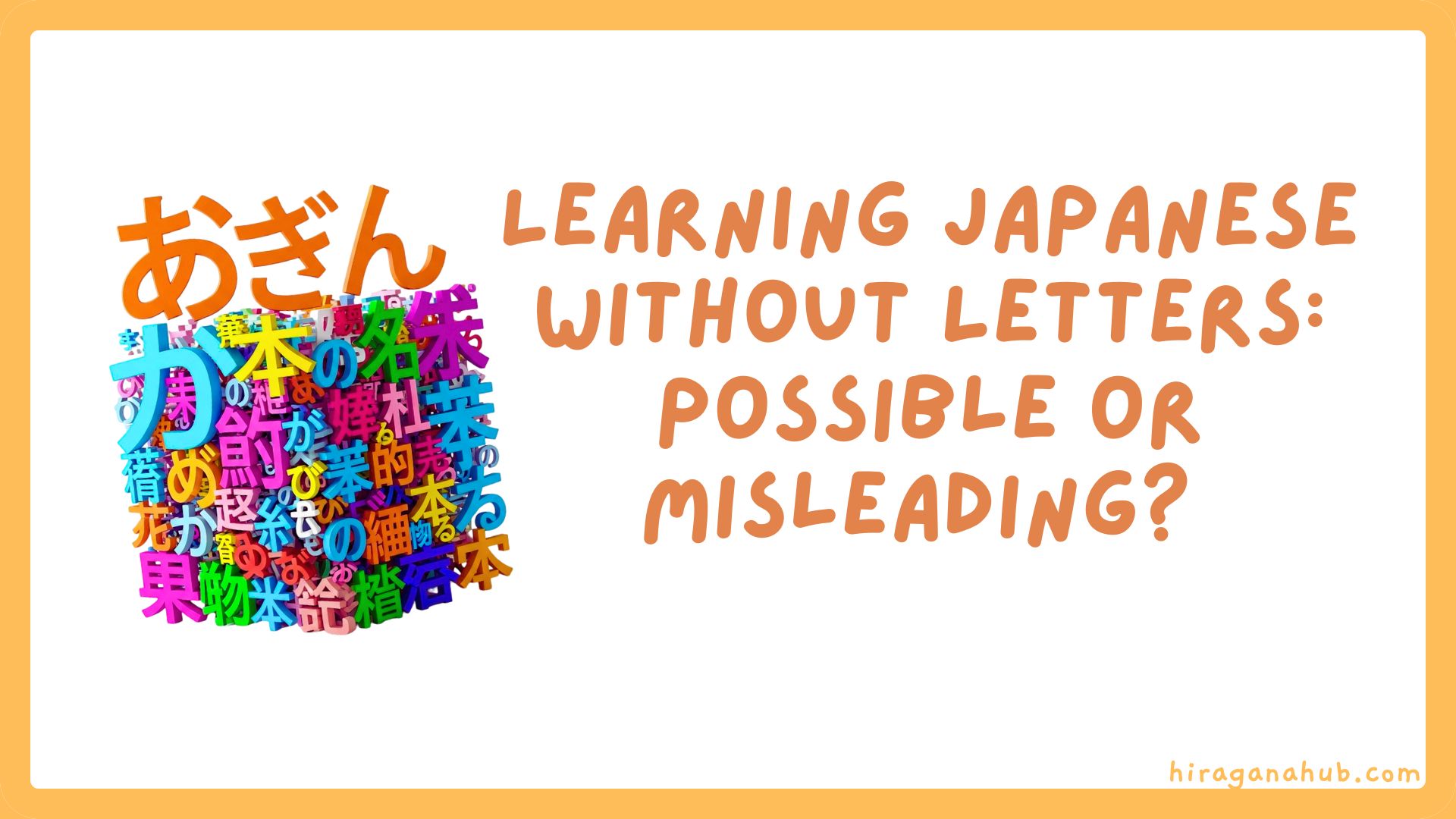“Is it possible to learn Japanese without letters?” This common question pops up among beginners—or even those who haven’t started learning yet. The answer? “Not impossible, but not recommended.”
Why? Because Japanese characters (especially Hiragana and Katakana) are the keys to accurate pronunciation and progress. Let’s break it down.
Learning japanese without Hiragana and Katakana, is it possible?
How important is it to learn Hiragana and Katakana when you want to master Japanese? Check out the facts and reasons to enlighten you.
1. The Facts About Japanese Writing Systems
Learning Japanese must pay attention to this point, the fact is Japanese uses three writing systems:
- Hiragana (ひらがな): For native Japanese words and grammar.
- Katakana (カタカナ): For foreign loanwords (e.g., コーヒー = koohii = coffee).
- Kanji (漢字): Complex characters borrowed from Chinese (e.g., 日本語 = Nihongo = Japanese language).
Hiragana and Katakana are the foundation before tackling Kanji.
2. Why You Shouldn’t Skip Learning Japanese Characters
The sensei highlights two critical points when learning Japanese esspecialy in this topic:
a. Pronunciation Becomes More Accurate
Each Hiragana/Katakana character represents a fixed sound. For example:
- さ (sa) is always “sa,” never “sha” or “ca.”
- Romaji can mislead: “tsu” (つ) vs. “su” (す).
Without Japanese characters, you risk ingrained mispronunciations.
b. It’s Not the Hardest Part
The sensei notes: “It’s not the hardest part.” Reality check:
- Hiragana/Katakana have just 46 basic characters (masterable in 1–2 weeks).
- Far easier than Kanji’s thousands of characters!
3. The Pitfalls of Relying on Romaji (Latin Script)
Beginners often lean on Romaji because it’s familiar—but it’s a trap. Issues include:
- Can’t read authentic materials (books, menus, street signs in Japan).
- Limited vocabulary: 70% of intermediate/advanced materials use Japanese script.
- Speaking struggles: Natives understand Japanese script more easily than Romaji.
Infographic: Romaji vs. Hiragana
| Romaji | Hiragana | Meaning |
|---|---|---|
| konnichiwa | こんにちは | Hello |
| arigatou | ありがとう | Thank you |
| watashi | わたし | I/me |
(Create a simple visual with this table, adding cartoon illustrations of someone confused by Romaji vs. happy reading Hiragana.)
4. Quick tips for learning Japanese (Hiragana/Katakana)
A. Mnemonics (Story Techniques)
- Example: く (ku) looks like a bird’s beak saying “ku-ku.”
- Use apps like “Dr. Moku” or “Tofugu” for visual mnemonics.
B. Daily 10-Minute Drills
- Write 5 characters on sticky notes; plaster them around your room.
- Practice reading Japanese product labels (e.g., コーラ = ko-ra = cola).
C. Game-Based Learning
- Play “Hiragana Battle” (Steam) or “Duolingo“ in Japanese script mode.
5. Closing: Start Small!
As the sensei advises, don’t fear Japanese characters. With just 10–15 minutes daily, you’ll read Hiragana/Katakana in 2 weeks.
“Japanese without its letters is like a house without a foundation. It might stand, but it’ll crumble easily!”
Reader Challenge:
“Try memorizing these 5 characters today: あ (a), い (i), う (u), え (e), お (o). Drop a comment if you succeed!”
Bonus: Recommended Resources
- Apps: LingoDeer, Anki (Hiragana flashcards).
- Book: “Japanese from Zero!” (starts with characters).


